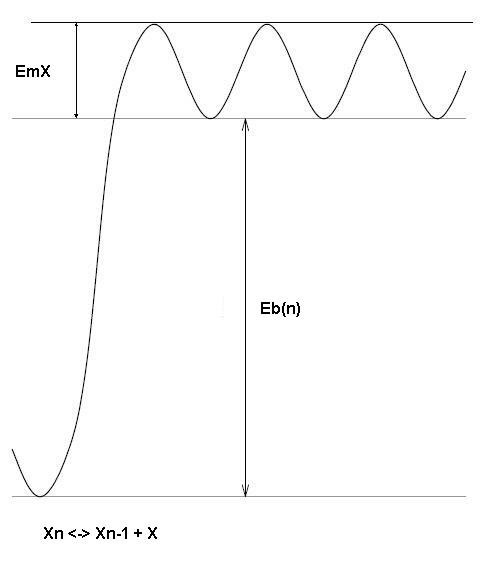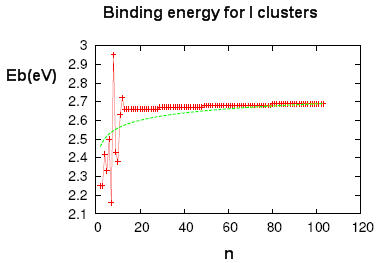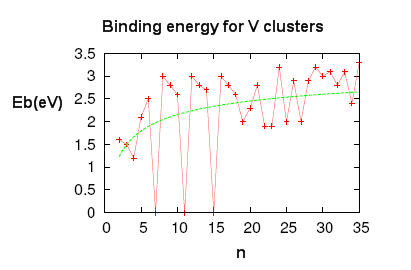Clusters are implemented as a special type of amorphous pockets with only one particle type, interstitials or vacancies.
Clusters emit particles releasing them as a point defect:
Xn -> X + Xn-1
The emission frequency is given by the expression:

Where:
λ is the jump distance.
When a mobile particle of the same type (X, interstitial or vacancy) that those of the cluster is near enough to the cluster (closer than the capture distance), it is captured and is inserted into it.
Xn + X -> Xn+1
The energies associated to the emission and growth are plotted below:

Examples of the binding energy for clusters are represented below (Cowern et al. 1999, Staab et al. PRB 2002):


According to experimental measurements and to calculation results, for high size values, the binding energies are fitted by a potential function. However, for low size values, the energies are irregular. DADOS implements a technique which allows insert values for specific sizes and a generic function for other sizes.
Specific values
They can be inserted by means of Eb_Cluster ?, with the DADOS data file format.
Generic function
The exponential function is implemented as follows (Jaraiz et al. 1996):

Where:
This expression comes from assuming that the total binding energy of the cluster of size "n" depends on "n".
When a mobile particle of complementary type (vacancy or interstitial) of those of the cluster is near enough to the cluster (closer than the capture distance), it is recombined (with an opposite particle). When only one particle is remaining, the cluster is transformed into a point defect.